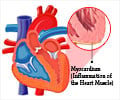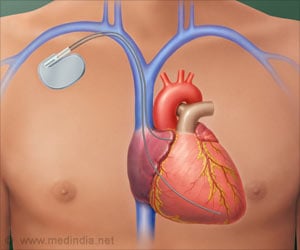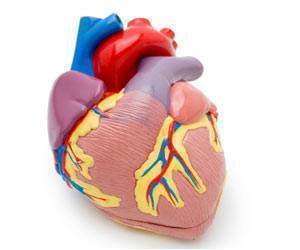The annual list of the top 10 major advances in heart disease has been compiled by the American Heart Association.

"But we know there is still much to be done in improving the lives of heart disease and stroke patients - and more importantly, in preventing these devastating diseases in the first place. Scientific research will help us lead the way," said Sacco.
The highlights of the top ten advances in cardiovascular research in 2010:
1. Tailoring treatment for people with diabetes to reduce their risk of cardiovascular disease
New research from the ACCORD Study Group offered insight into specific treatments that can reduce their risk of cardiovascular disease (CVD). The first study found that aggressive blood pressure control does not reduce CVD risk in people with type 2 diabetes at high risk for CVD.
In a second study, a combination therapy with a statin plus a fibrate was no better at reducing risk than a statin alone in patients with type 2 diabetes at high risk for CVD.
Advertisement
Two new studies have supported evidence that Transcatheter aortic valve implantation (TAVI) can improve symptoms and outcomes - including quality of life - even over the course of several years. While there are some risks associated with TAVI, including strokes and other major cardiovascular events, the catheter-based procedure offers significant progress in this area.
Significant studies reported that chest compression only, or 'Hands Only CPR' for adults by bystander lay rescuers improves survival outcome. Public awareness campaigns resulted in increased use of hands only CPR, as well as improved survival rates.
While the new procedure appeared successful in adults, it is important to note that using conventional chest compressions with rescue breathing is still important for children stricken with sudden cardiac arrest.
4. More options for reducing stroke risk in atrial fibrillation
For the first time in more than 20 years there are viable alternatives to the primary prevention of stroke for patients with atrial fibrillation (AF). Warfarin (Coumadin) has long been the standard anti-clotting drug used to reduce the risk of stroke for these patients. But it carries its own complications from bleeding, and managing the dose requires regular blood tests, making it difficult to manage for both patients and doctors.
Now, several new drugs have been found to work as well as warfarin - and are simpler for patients to take - offering an important advance in this field.
5. Adjusting pacing therapies can improve outcomes for heart failure patients
New studies showed that adding additional resynchronization pacing to ICD therapy could lead to improved outcomes in an expanded group of heart failure patients. In addition, new types of ICDs (defibrillators without leads, for example) can offer options that reduce some of the risks associated with traditional devices.
6. Hopeful new procedure for infants with congenital heart disease
The Pediatric Heart Network's randomized trial of Norwood shunt types in infants with single-ventricle lesions showed that the type of shunt used makes a difference in outcomes. Better transplantation-free survival at 12 months is a possibility with this new understanding of the better shunt choice for these patients.
This was the first large-scale randomized trial in congenital heart surgery, offering an approach that should provide answers to other questions in the future.
7. Finding the right anti-clotting (anti-platelet) therapy
New research from the PLATO investigators has found that ticagrelor may improve outcomes and reduce adverse events better than the current standard, clopidogrel.
The CURRENT-OASIS 7 Trial is exploring the optimal dosing of clopidogrel and aspirin in patient undergoing invasive surgery. These studies will help providers better understand the situations where new choices and dosages may improve results for the patient.
8. Basic science findings offer insight into future progress
Several studies this year brought the future of medicine closer to the present with new insight into emerging technologies. Findings from stem cell therapy have shown improved quality of life and survival in several early studies of patients with chronic heart failure and support the development of future cell-based therapeutics.
A large animal study defined the basic mechanisms for heart muscle regeneration initiated by specific types of stem cells. The results demonstrated that these stem cells repair scarred myocardium through promotion of the generation of new heart muscle and blood vessel).
9. Using science to support healthy lifestyle behaviors
New science examining lifestyle behaviors in adults and children, with particular emphasis on physical activity and consumption pattern, show that such conditions as obesity and hypertension are positively influenced by a change in diet with decreasing sodium levels. Results from the school setting suggest that the earlier one starts to adopt healthy behaviors the better the effect on health outcomes.
10. Get With The Guidelines participation eliminates disparity gaps in care
Racial and ethnic disparities have been found in the quality of care delivered to patients with cardiovascular disease and achieving equity and addressing disparities has implications for quality, cost, risk management, and community benefit.
These findings are the first to show that participating in a quality improvement program, such as Get With The Guidelines-Coronary Artery Disease, can eliminate racial and ethnic disparities of care while increasing the overall use of evidence-based care for heart attack patients.
Source-ANI















